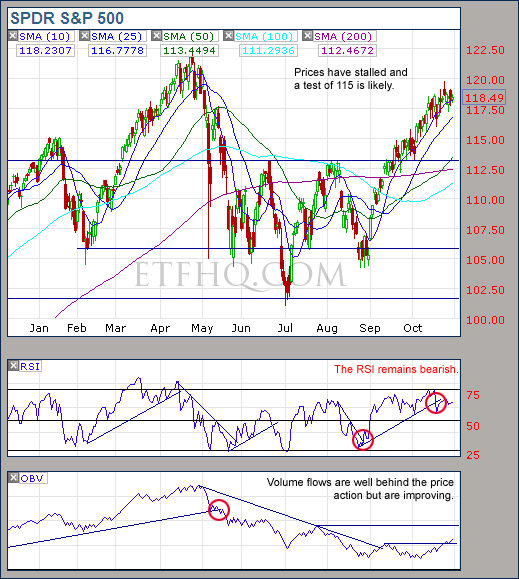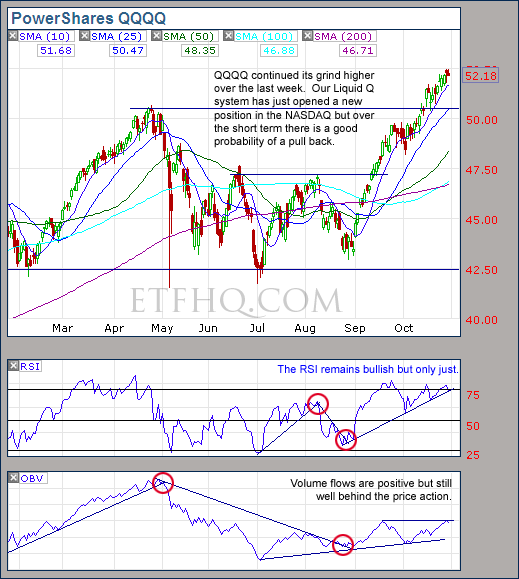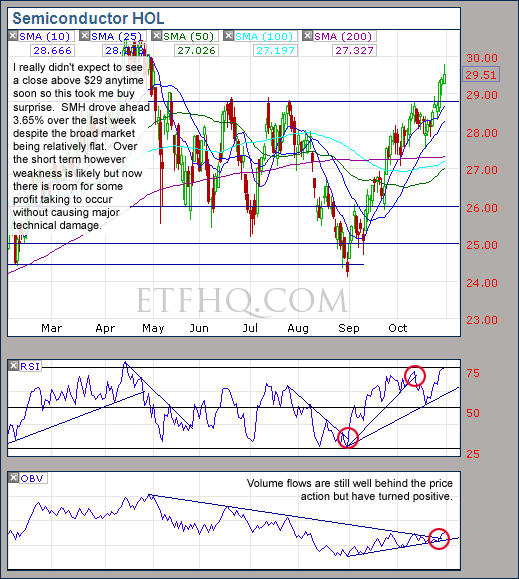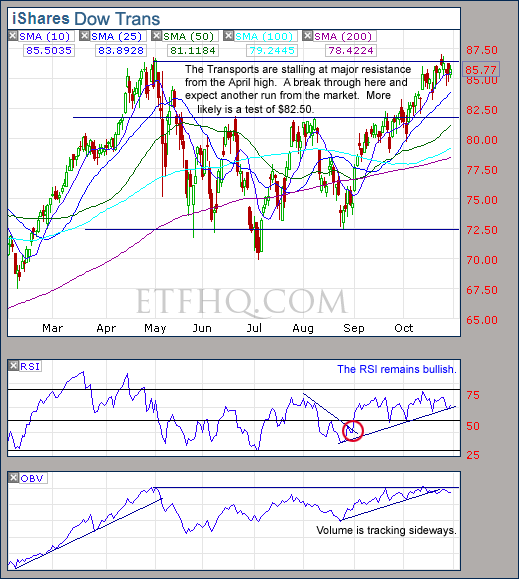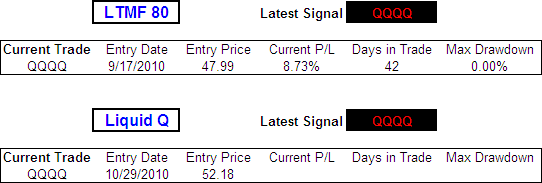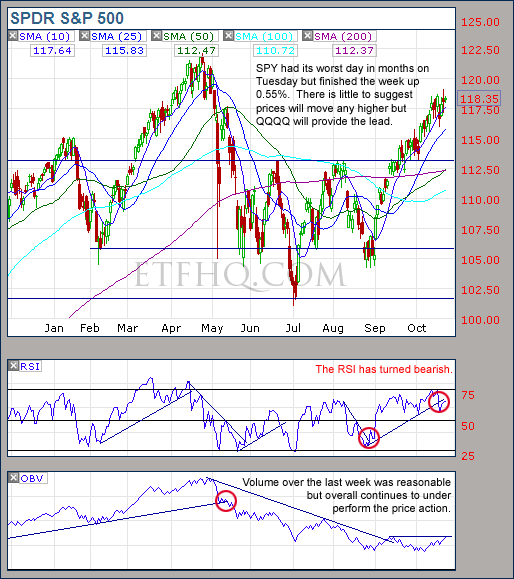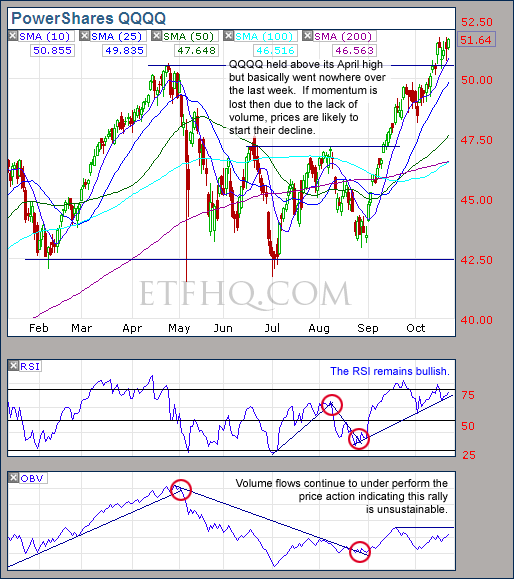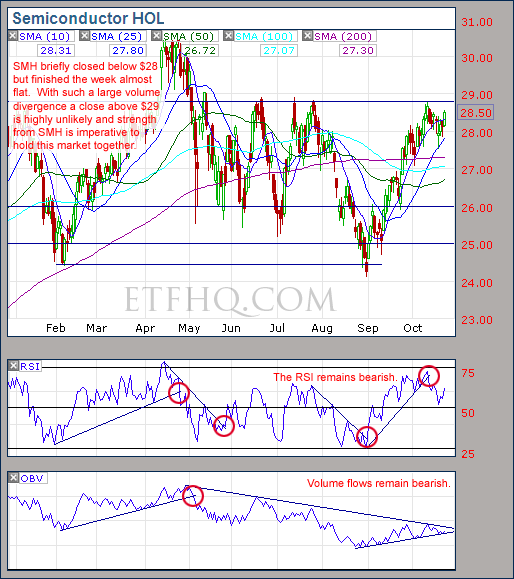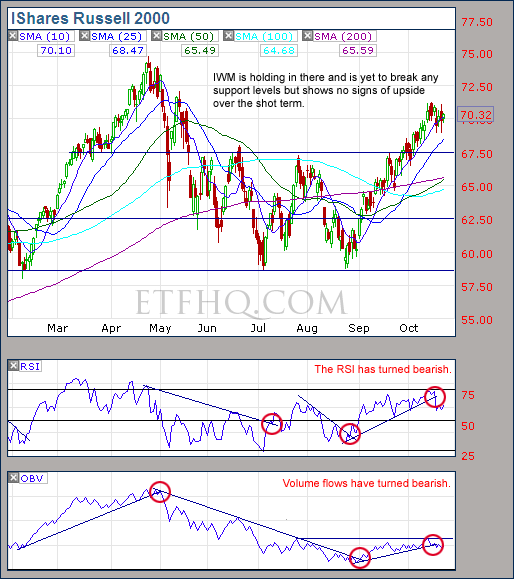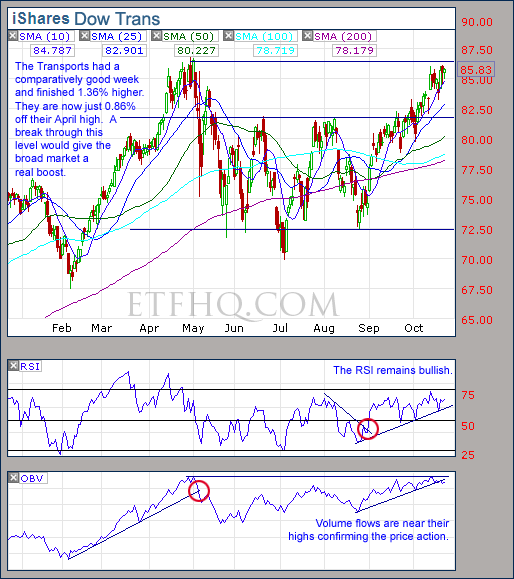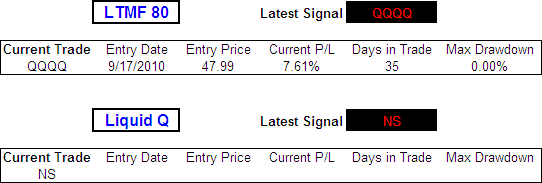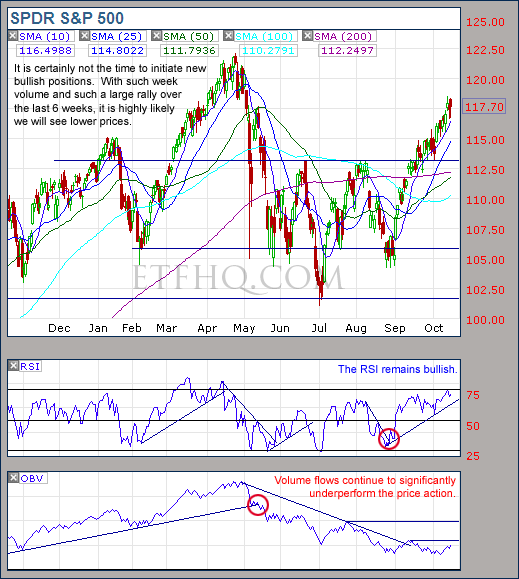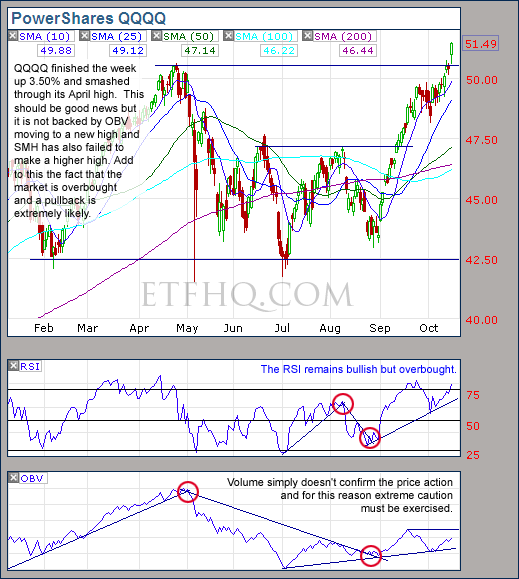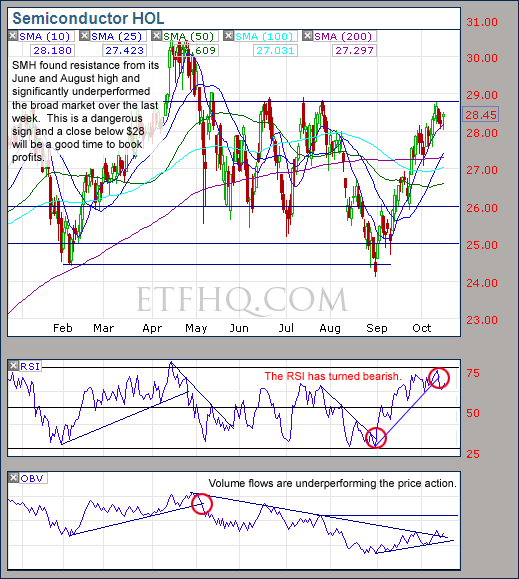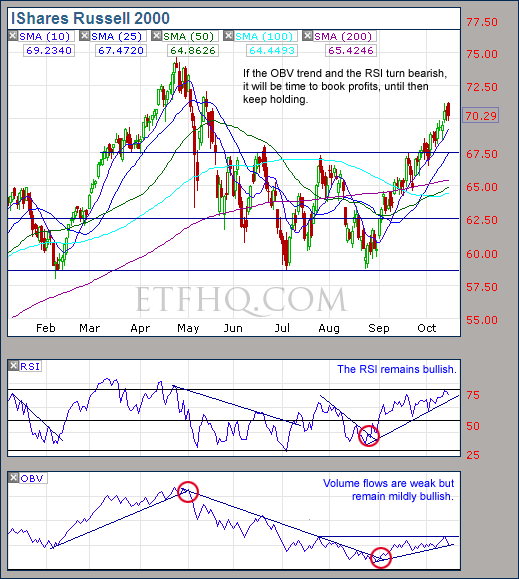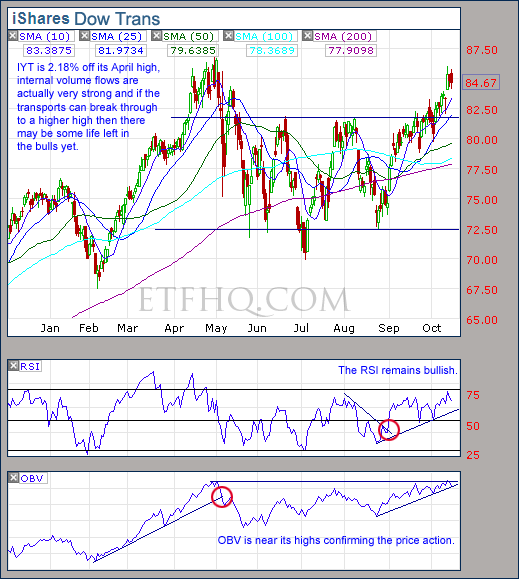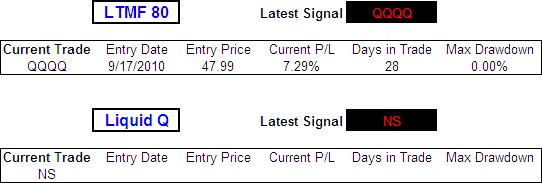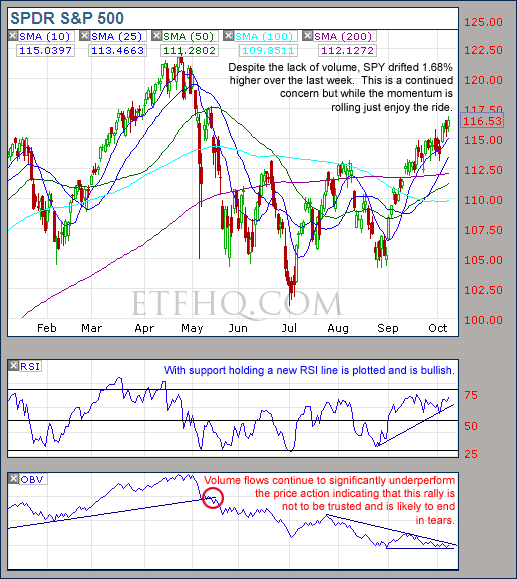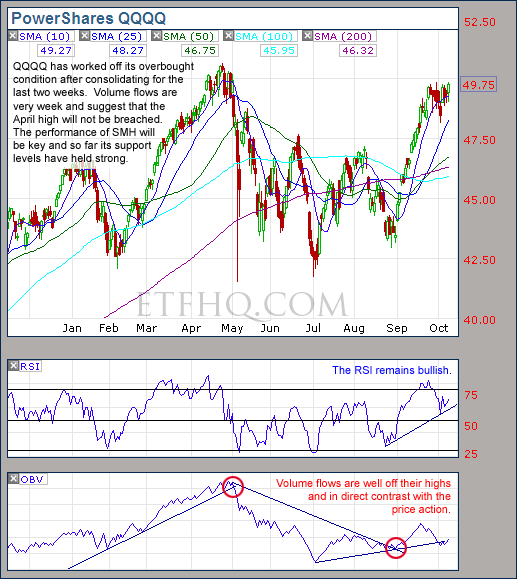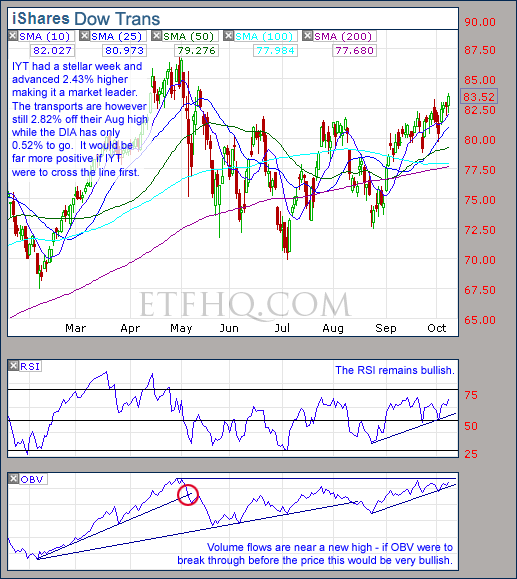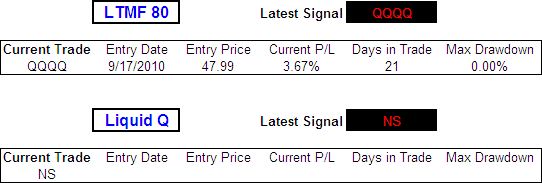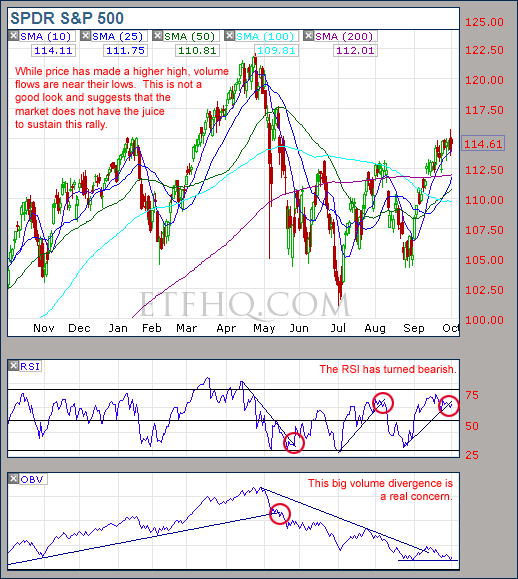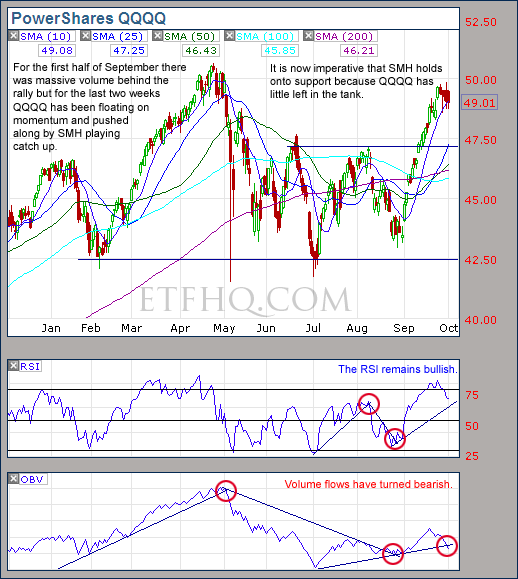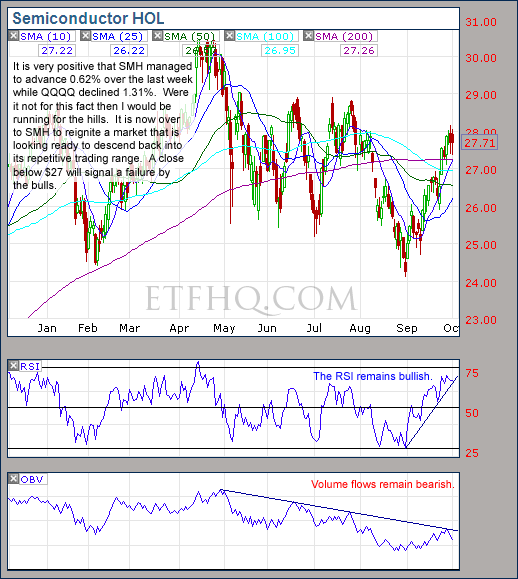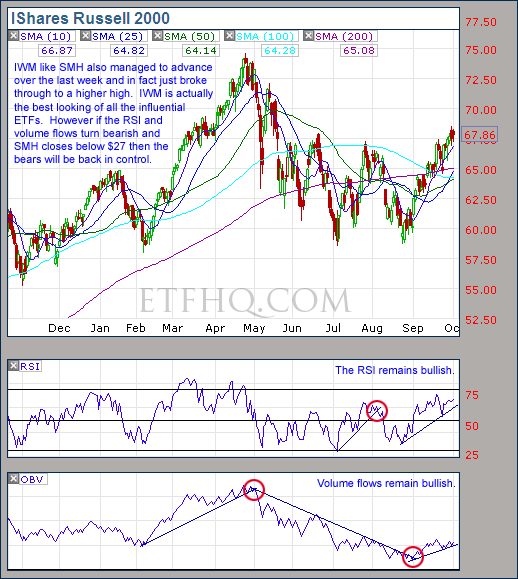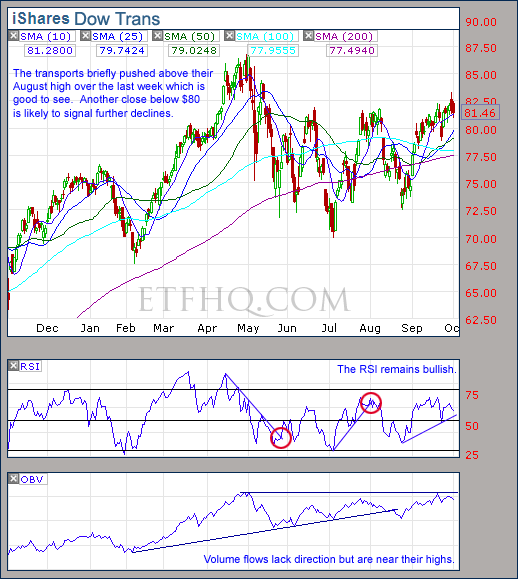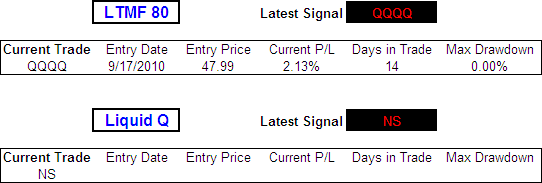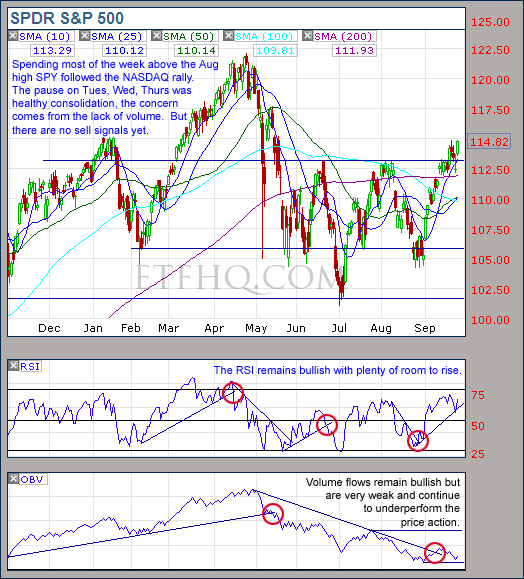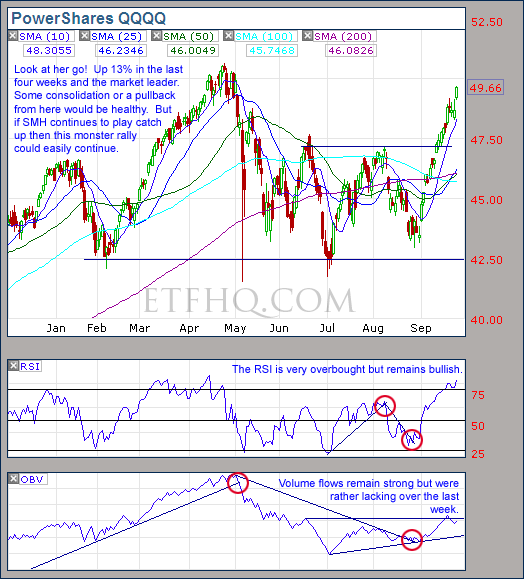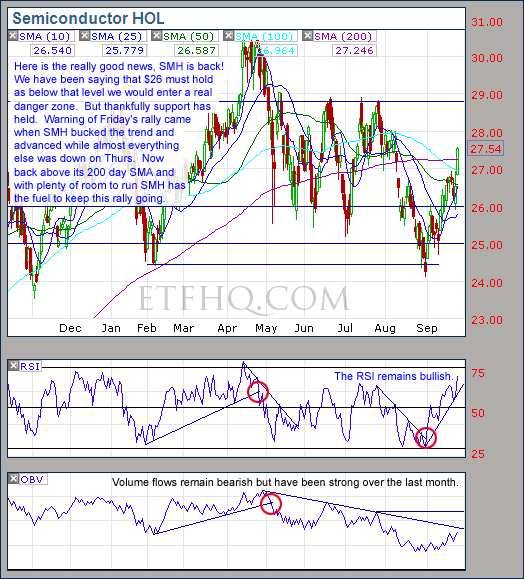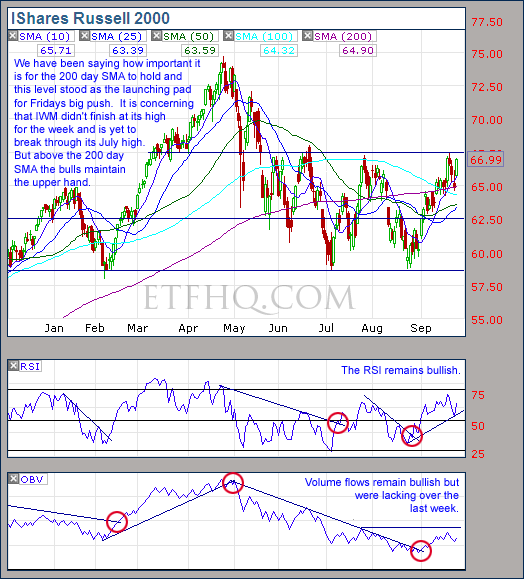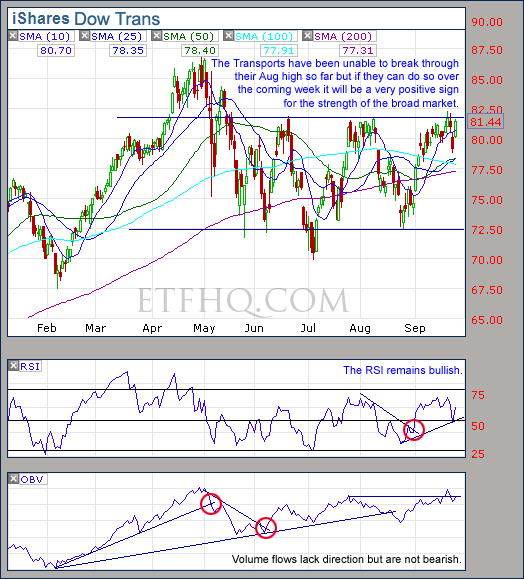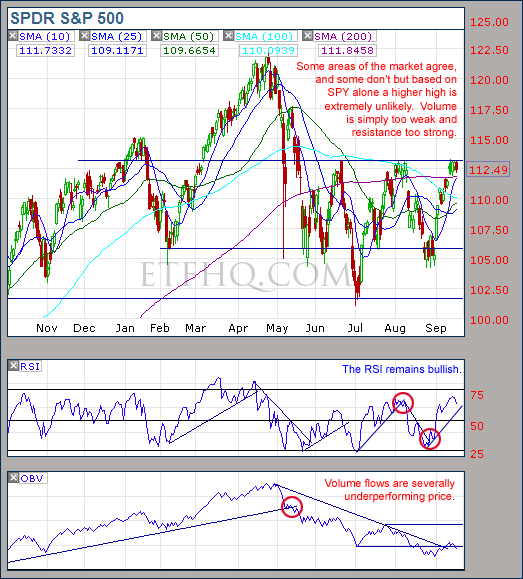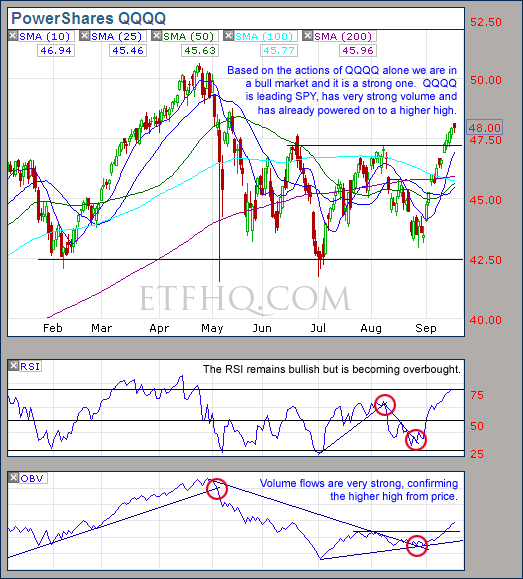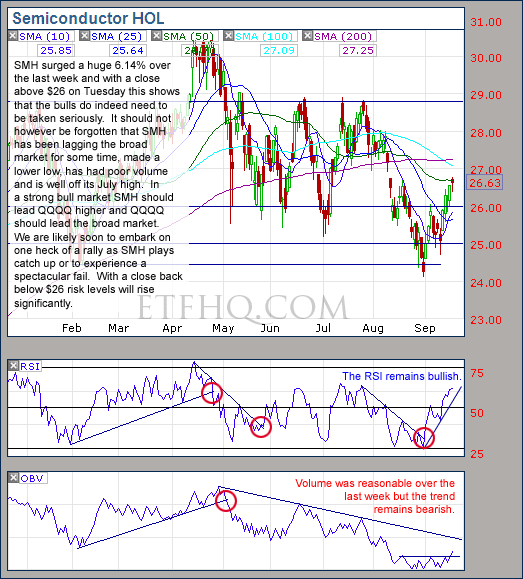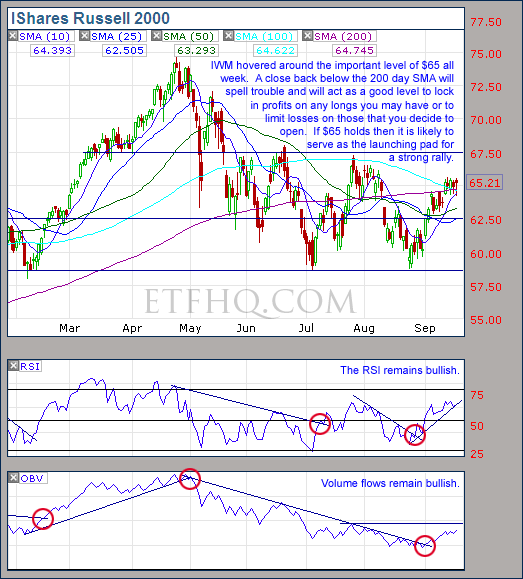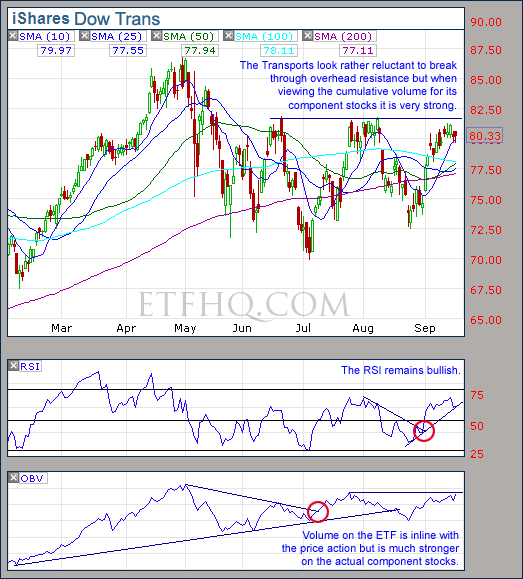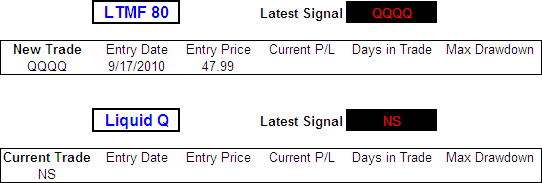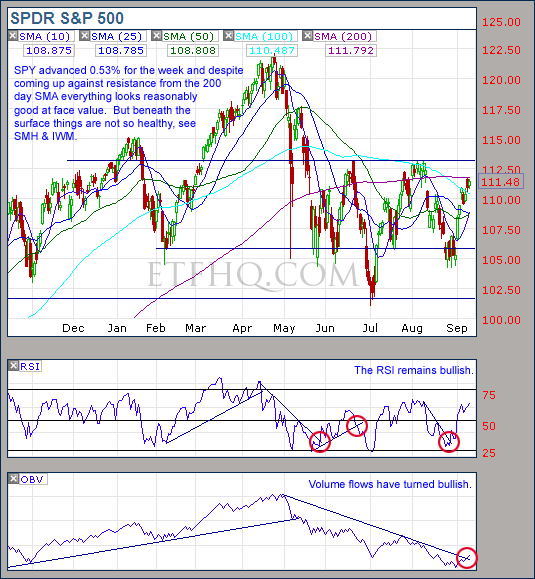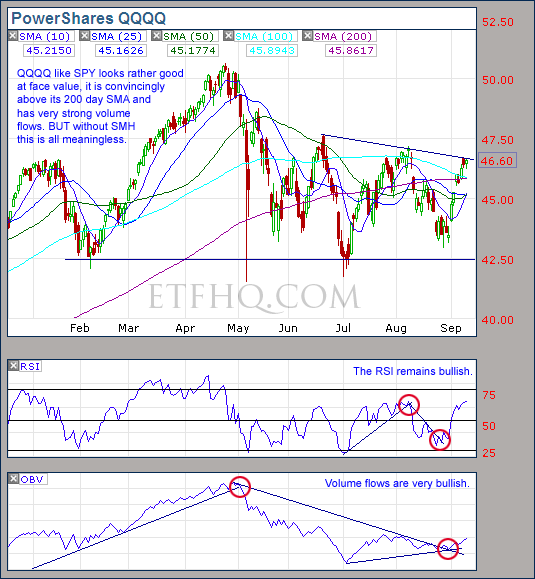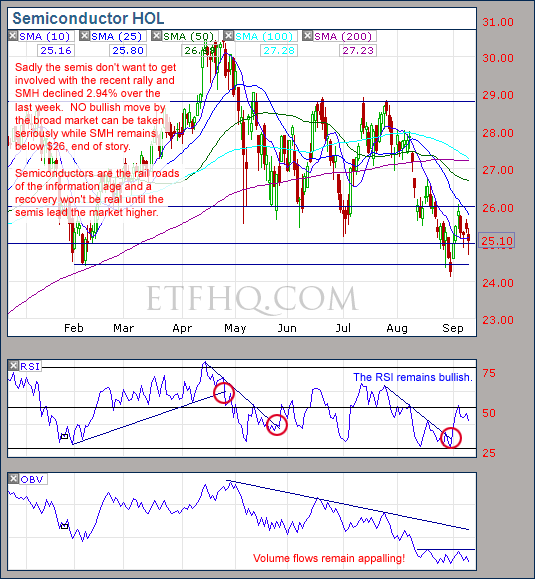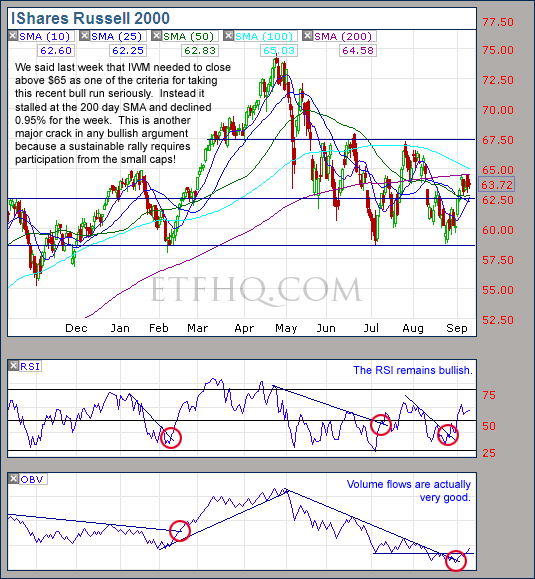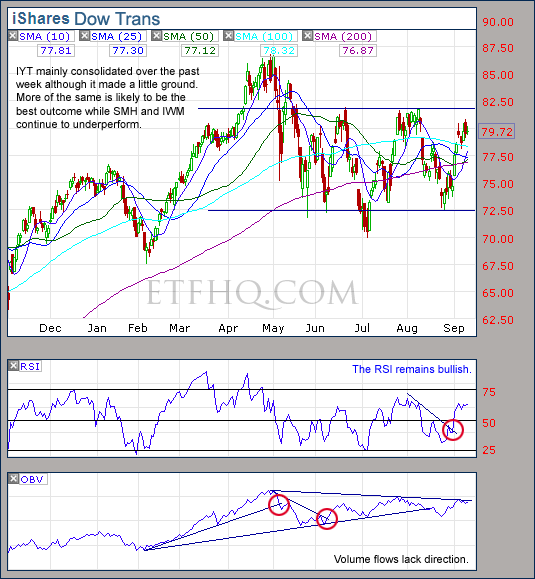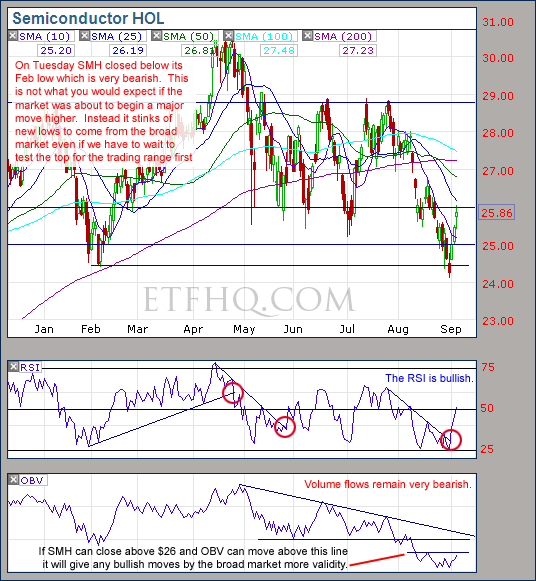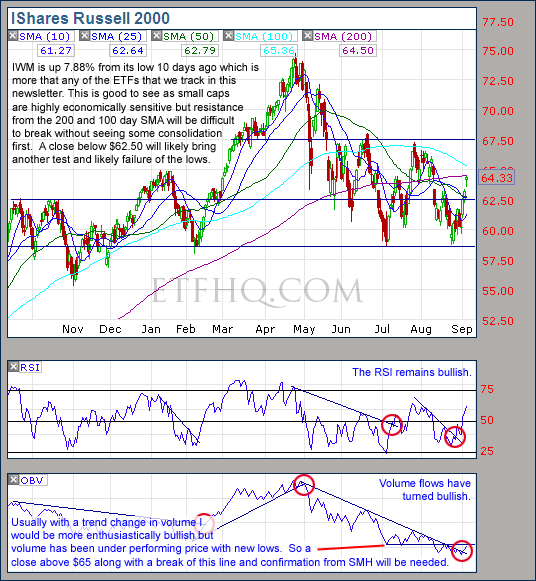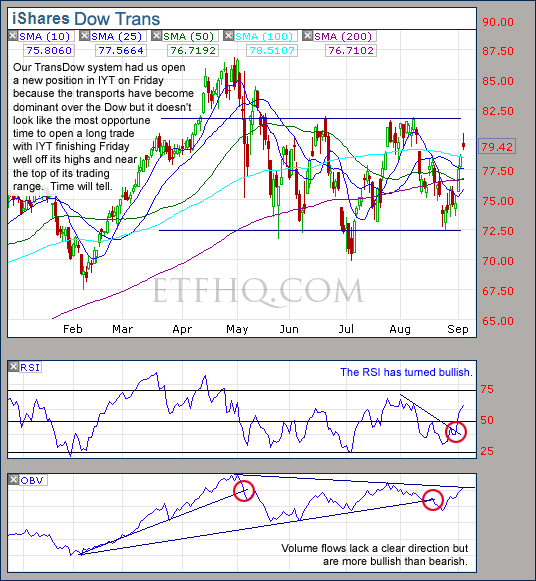November 08, 2010 – 05:18 am EST
Wow and wow again. Last week we talked about how bullish it was to see SMH close above $29 and while profit taking was likely “if the Transports breakout here then expect yet another leg to this rally”. Well on Tuesday IYT closed at a new high and since then just about everything you can imagine is up and up big.
The LTMF 80 signal that comes free with this newsletter is showing a profit of 11.84% over the last 49 days and our main portfolio is up 35% YTD on margin (345% since June 2008).
****Thanks to all those who referred people to this newsletter over the last week. The more readers we have the more services we can provide you.
.
ETF % Change Comparison
.

When the numbers are laid out like this it is all the more impressive. New highs for everything but IWM while SMH is almost 30% off its low and leads the market. This is just the kind of strength that we want to see at new highs; the Semis and QQQQ out front while the more economically stable SPY and DIA lag.
Learn more – ETF % Change Comparison
.
![]()
.
A Look at the Charts
.

New highs are great but if you are not already in then wait for a pull back.
.
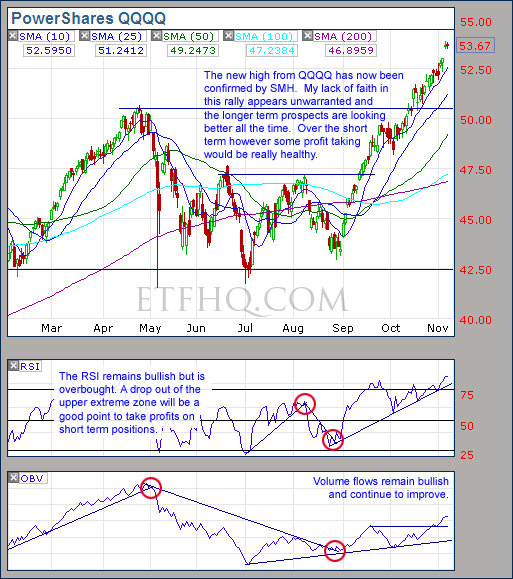
When the RSI drops out of the upper extreme zone it will be a good time to take profits on short term positions.
.
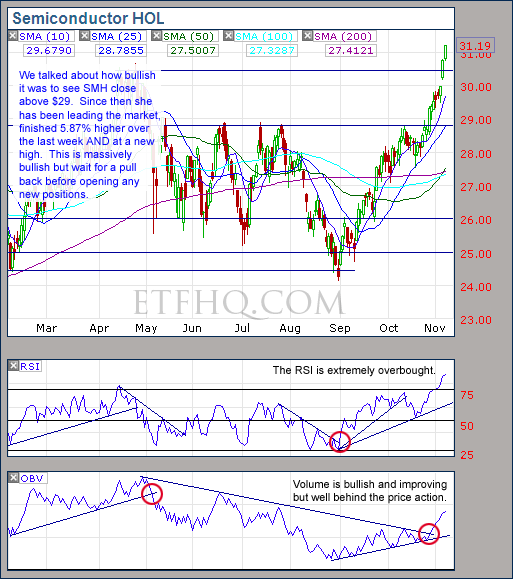
SMH broke out to a new high and the heavens rejoiced! This is such a good sign for the health of the broad market.
.
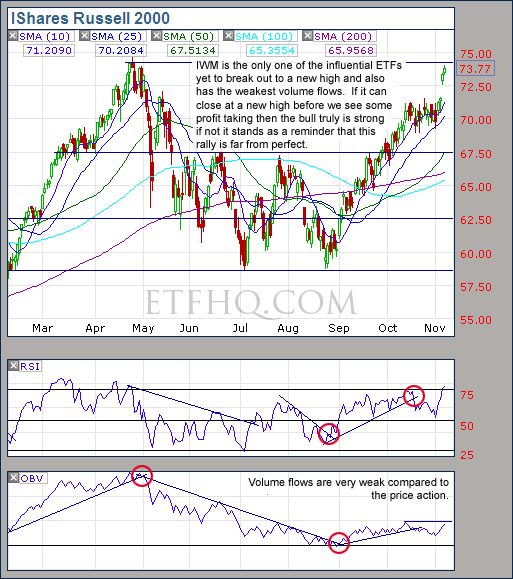
If IWM can close at a new high before we see some profit taking then the bull market is just getting started.
.
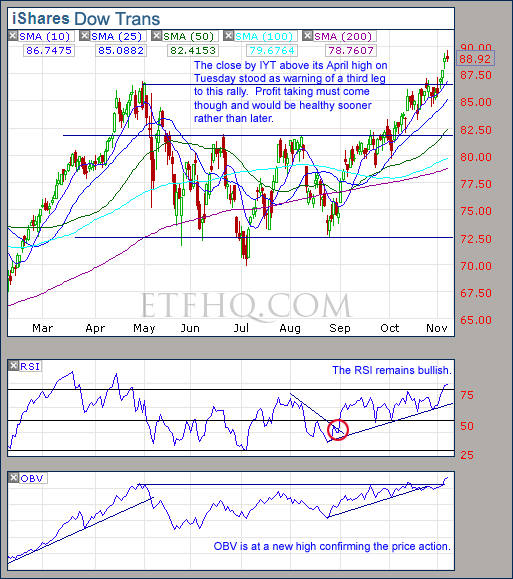
From the view point of the Dow Theory this is an exceedingly bullish sign.
.
![]()
.
OM3 Weekly Indicator
.

The ‘Strong Buy’ signals that have existed for the last 10 weeks have been spot on. ‘Bull Alerts’ have this week returned across the board.
Learn more – The OM3 Indicator
.
![]()
.
TransDow & NasDow
.

The Transportation Index and the NASDAQ remain dominant and both positions are showing a small profit. Historically the market has achieved most of its gains under these conditions.
.
What the TransDow Readings tell us:
The TransDow measures dominance between the DJ Transportation Index (DJTI) and the Dow Jones Industrial Average (DJIA). In a strong market the more economically sensitive Transportation Index should be dominant over the DJIA.
Historically the DJTI has been dominant over the Dow 45% of the time. The annualized rate of return from the DJTI during this period was 18.47% with the biggest loss for one trade sitting at -13.27%. The annualized return from the DJIA during the periods it was dominant over the DJTI was just 4.06% and the biggest loss for one trade was -16.13%. A 4% stop-loss is applied to all trades adjusting positions only at the end of the week.
What the NasDow Readings tell us:
The NasDow measures dominance between the NASDAQ and the DJIA. Using the same theory behind the Trans Dow; in a strong market the more economically sensitive NASDAQ should be dominant over the DJIA.
Historically the NASDAQ has been dominant over the DJIA 44% of the time. Taking only the trades when the NASDAQ is above its 40 week moving average the annualized rate of return was 25.47% with the biggest loss for one trade sitting at –8.59%. The annualized rate on the DJIA during the periods it was dominant over the NASDAQ is just 8.88% and the biggest loss for one trade was –12.28%. A 8% stop-loss is applied to all trades adjusting positions only at the end of the week.
.
![]()
.
LTMF 80 & Liquid Q
.
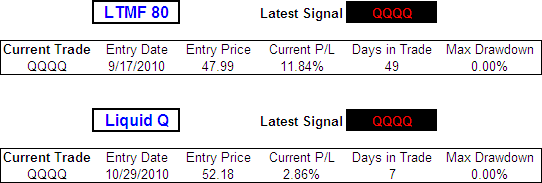
Both the LTMF 80 and Liquid Q have open positions in QQQQ and both of them are showing a profit at this point.
.
Historical Stats:
.

.
How The LTMF 80 Works
LTMF stands for Long Term Market Forecaster. It reads volume flows relative to price action and looks for out performance of volume measured on a percentage basis over the prior 12 months. During a sustained rally the readings will reach high levels (near 100%) making it imposable for the volume reading to always outperform price so any reading above 80% will maintain the buy signal. This system has outperformed the market over the last 10 years but performance has been damaged by some nasty losses. It only produces buy signals and only for QQQQ.
How Liquid Q Works
Liquid Q completely ignores price action and instead measures the relative flow of money between a selection of economically sensitive and comparatively stable ares of the market. It looks for times when the smart money is confident and and can be seen by through volume investing heavily is more risky areas due to an expectation of expansion. This system has outperformed the market over the last 10 years and remained in cash through most of the major declines. It only produces buy signals and only for QQQQ. We will provide more performance details on the web site for these systems soon.
.
![]()
.
Summary
This rally didn’t start the best way; it lacked volume across the board and participation from SMH. Now volume is improving, SMH has played catch up and all the influential ETFs but IWM are at new highs for the year. This is all exceedingly positive and gives backing to a more long term bullish prospect.
However the danger when a market relentlessly keeps going up like this is forgetting that it won’t continue indefinitely. We are well overdue for some profit taking and the risk of a short term correction is high. Due to the latest developments any pull back should be seen as an opportunity to add to long term bullish positions.
.
Any disputes, questions, queries, comments or theories are most welcome in the comments section below.
.
Derry
And the Team @ ETF HQ
“Equipping you to win on Wall St so that you can reach your financial goals.”
.
P.S Like ETFHQ on Facebook – HERE
.
![]()
.
Quote of the Day:
“I want employees to ask themselves whether they are willing to have any contemplated act appear on the front page of their local paper the next day, be read by their spouses, children and friends… If they follow this test, they will not fear my other message to them: Lose money for my firm, and I will be understanding; lose a shred of reputation for the firm, and I will be ruthless.” – Warren Buffett

